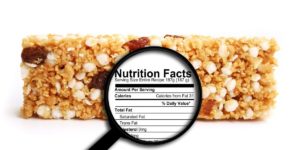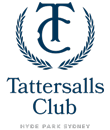In Part Two, Zuzana Vasailes gives us some more useful tips on how to read food labels so that you can tell the difference between mislabelled junk and truly healthy foods.

Study the Ingredients List
Product ingredients are listed by quantity — from highest to lowest amount. This means that the first ingredient is what the manufacturer used the most of. A good rule of thumb is to scan the first three ingredients, as they make up the largest part of what you’re eating. If the first ingredients include refined grains, a type of sugar, or hydrogenated oils, you can assume that the product is unhealthy.
Instead, try choosing items that have whole foods listed as the first three ingredients. In addition, an ingredients list that is longer than two to three lines suggests that the product is highly processed.
Watch out for Serving Sizes
Nutrition labels state how many calories and nutrients are in a standard amount of the product — often a suggested single serving. However, these serving sizes are frequently much smaller than what people consume in one sitting. For example, one serving may be half a can of soft drink, a quarter of a cookie, half a chocolate bar, or a single biscuit.
By doing this, manufacturers try to trick people into thinking that the food has fewer calories and less sugar. Many people are unaware of this serving size scheme, assuming that the entire container is a single serving, when in truth it may consist of two, three, or more servings. If you’re interested in knowing the nutritional value of what you’re eating, you need to multiply the serving given on the back by the number of servings you consumed.
Different Names for Sugar
Sugar goes by countless names, many of which you may not recognise. Food manufacturers use this to their advantage by purposely adding many different types of sugar to their products to hide the actual amount. In doing so, they can list a healthier ingredient at the top, mentioning sugar further down. So even though a product may be loaded with sugar, it doesn’t necessarily appear as one of the first three ingredients.
To avoid accidentally consuming a lot of sugar, watch out for the following names of sugar in ingredient lists:
Types of sugar: beet sugar, brown sugar, buttered sugar, cane sugar, caster sugar, coconut sugar, date sugar, golden sugar, invert sugar, muscovado sugar, organic raw sugar, raspadura sugar, evaporated cane juice, and confectioner’s sugar.
Types of syrup: carob syrup, golden syrup, high-fructose corn syrup, honey, agave nectar, malt syrup, maple syrup, oat syrup, rice bran syrup, and rice syrup.
Other added sugars: barley malt, molasses, cane juice crystals, lactose, corn sweetener, crystalline fructose, dextran, malt powder, ethyl maltol, fructose, fruit juice concentrate, galactose, glucose, disaccharides, maltodextrin, and maltose.
Many more names for sugar exist, but these are the most common. If you see any of these in the top spots on the ingredients lists, or several kinds throughout the list, then the product is high in added sugar.
The Bottom Line
The best way to avoid being misled by nutrition labels is to avoid processed foods altogether. After all, whole food doesn’t need an ingredients list. Still, if you decide to buy packaged foods, be sure to sort out the junk from the higher-quality products with these helpful tips.

